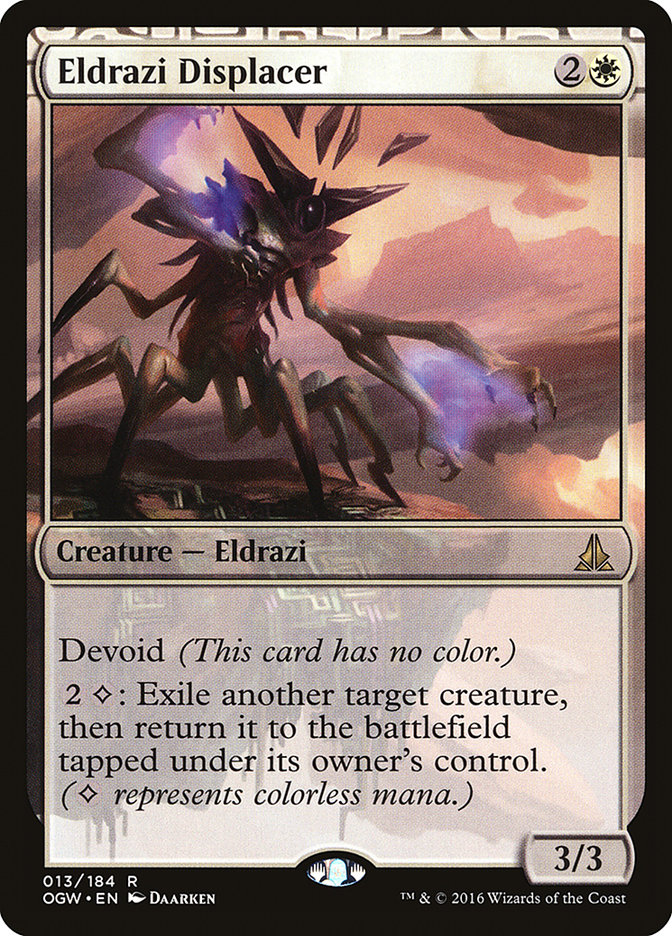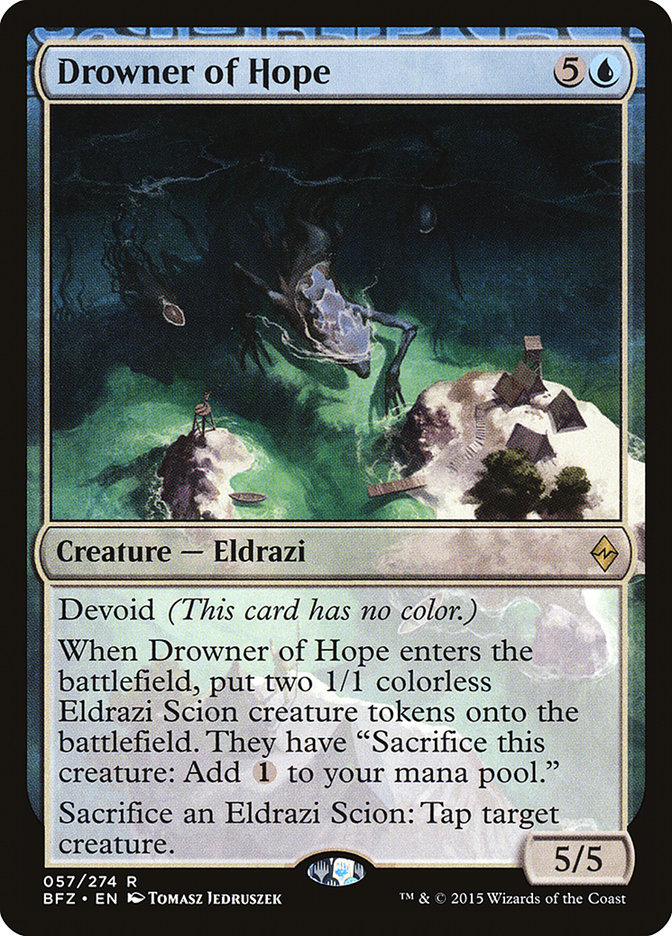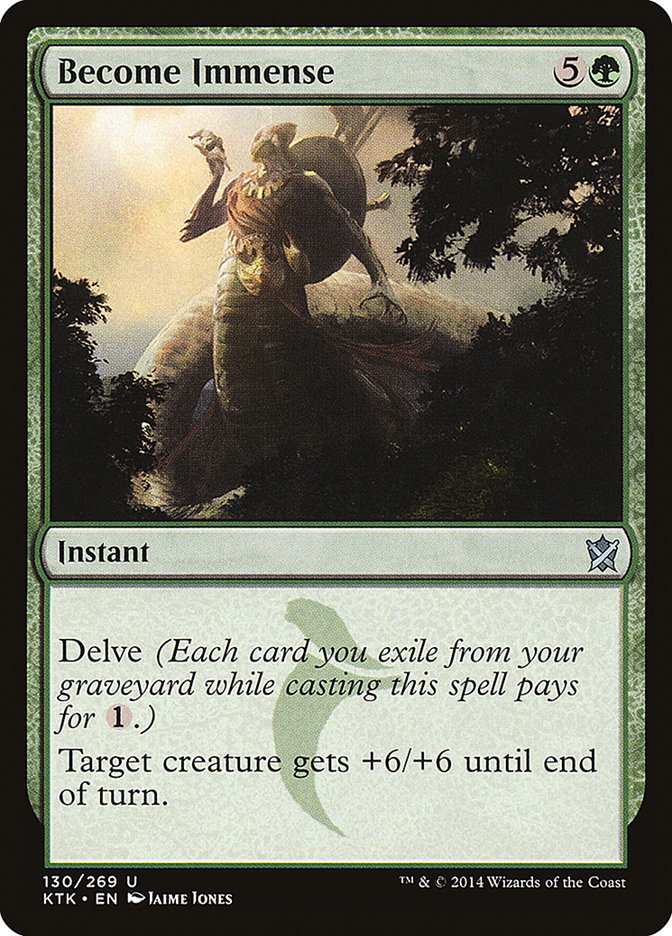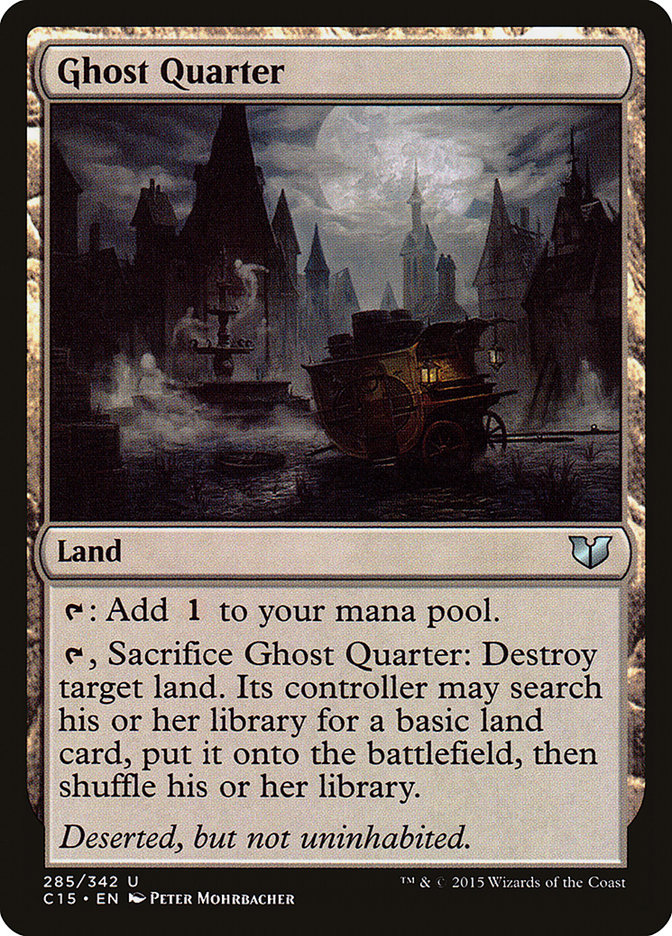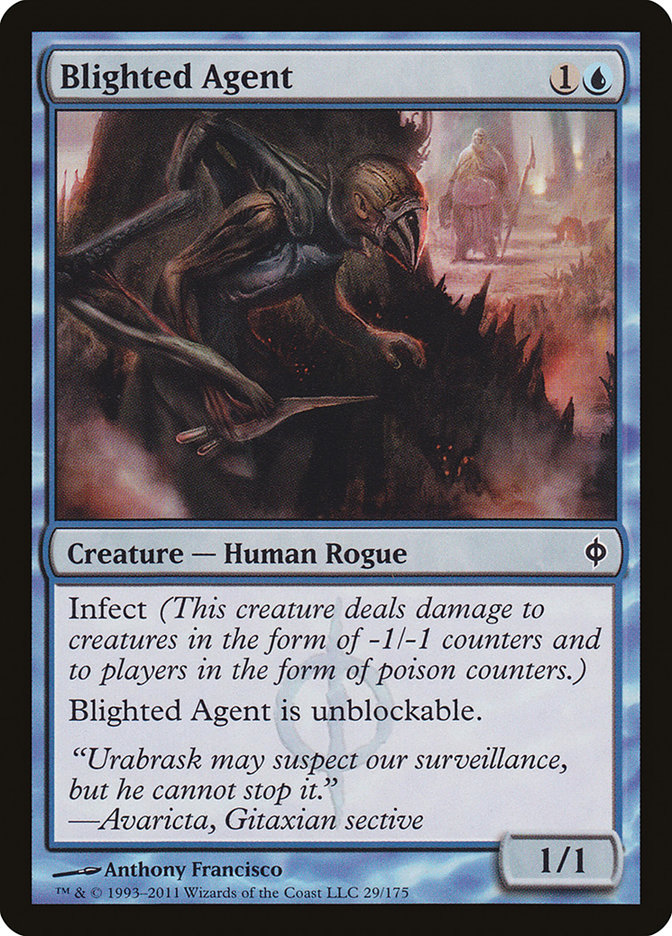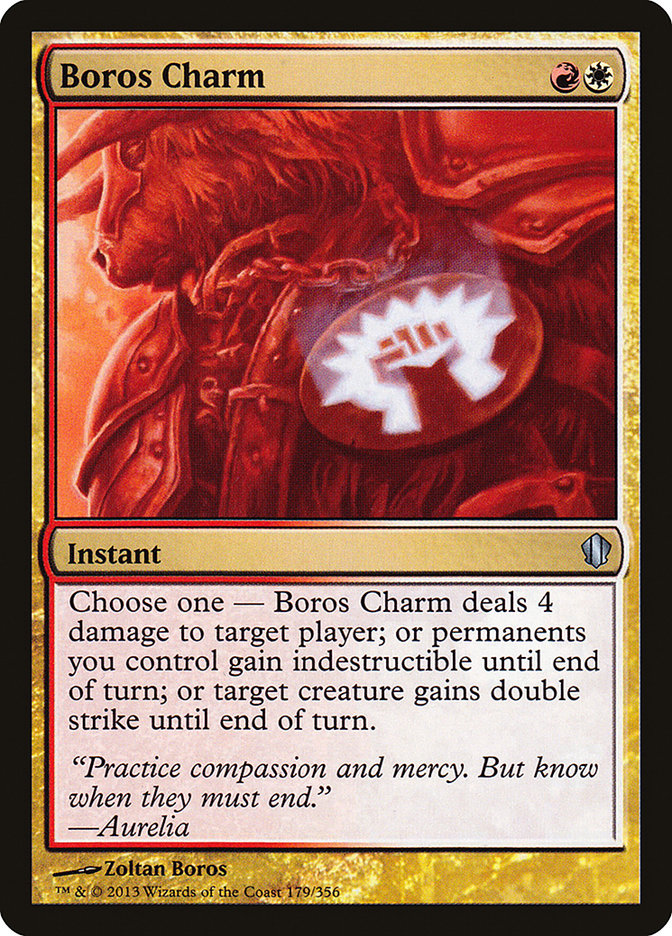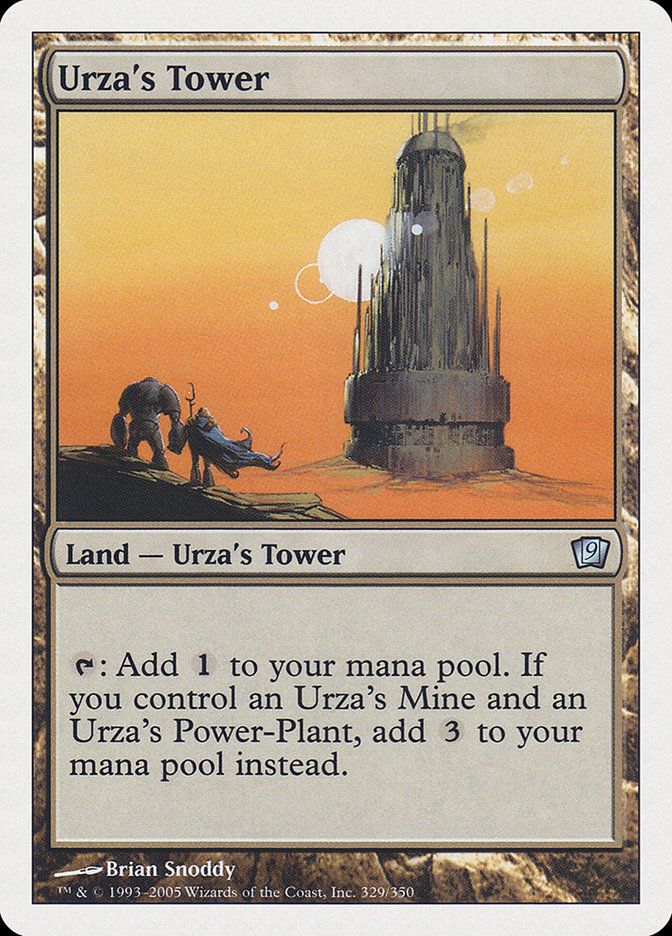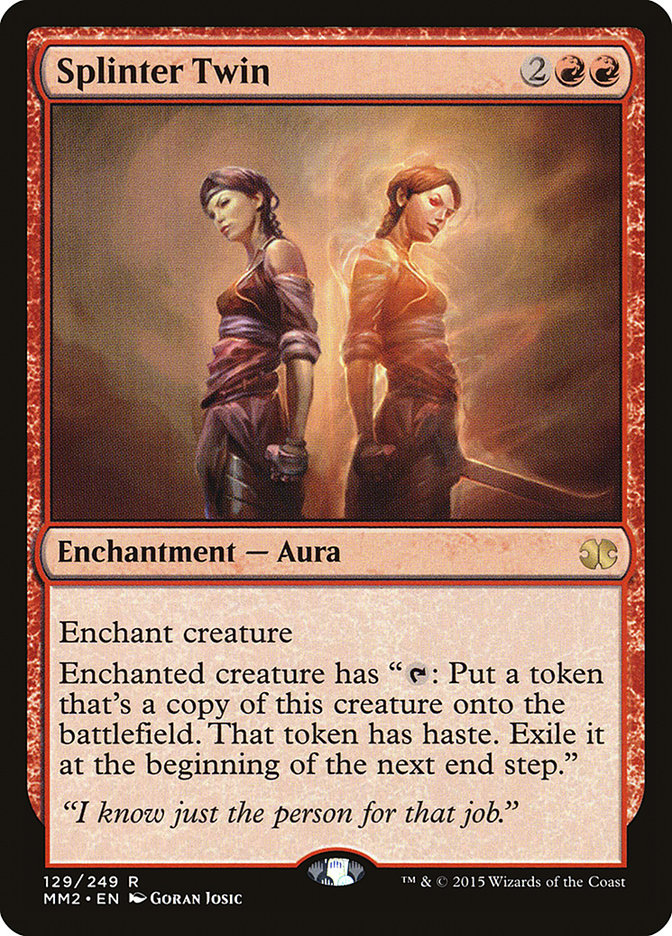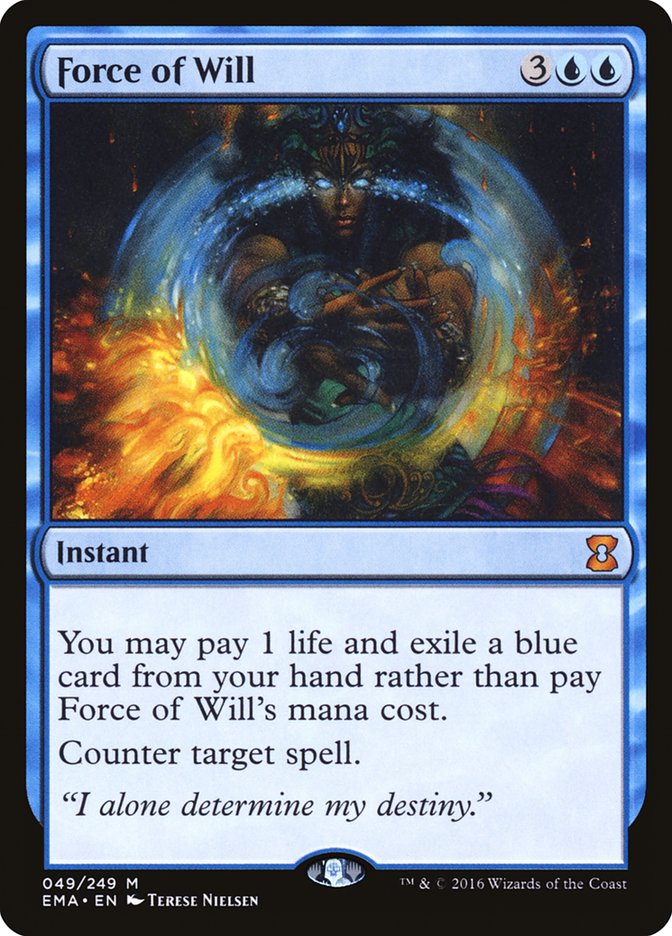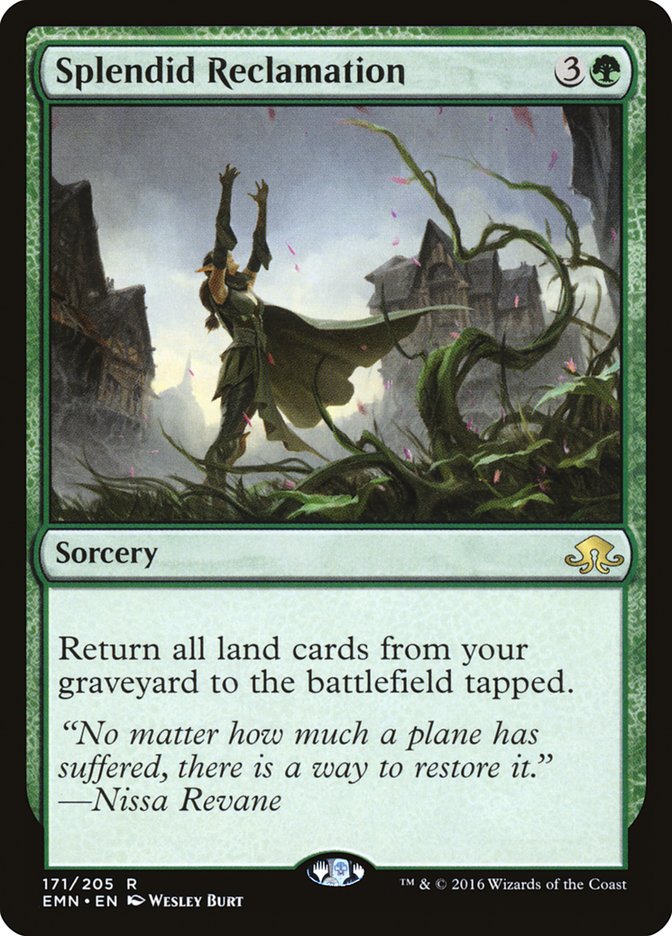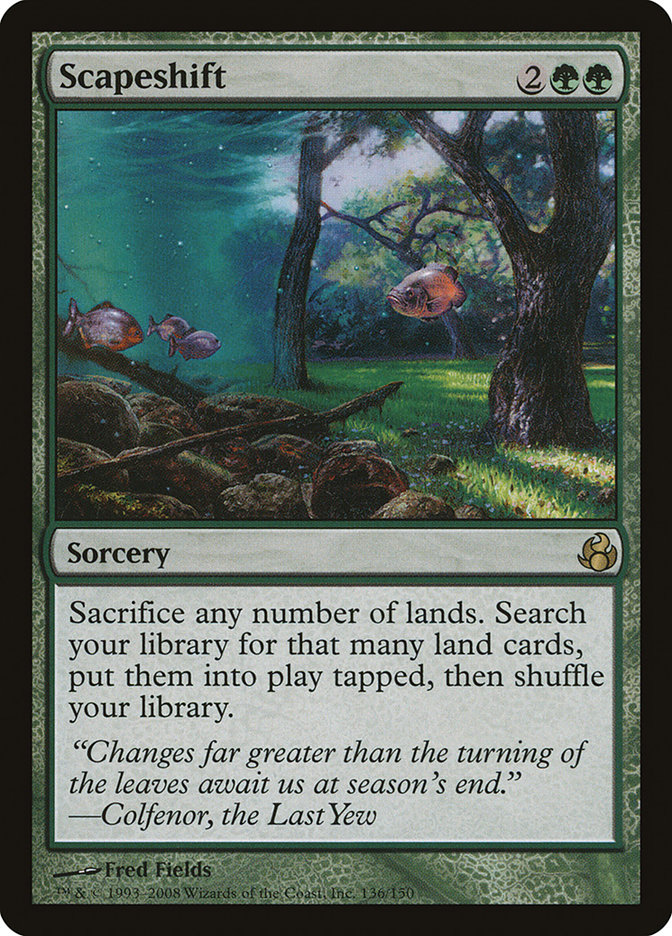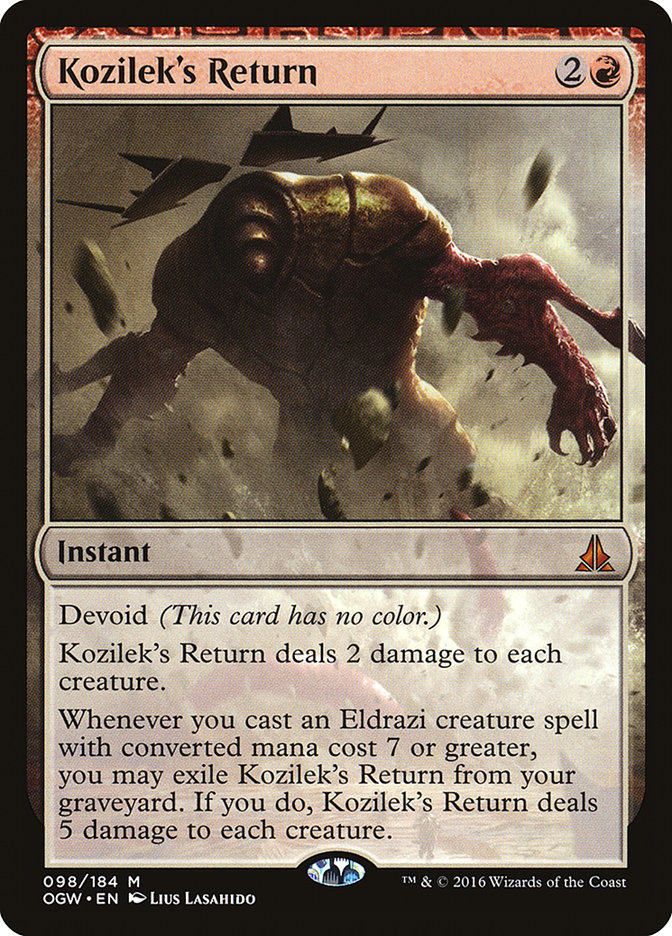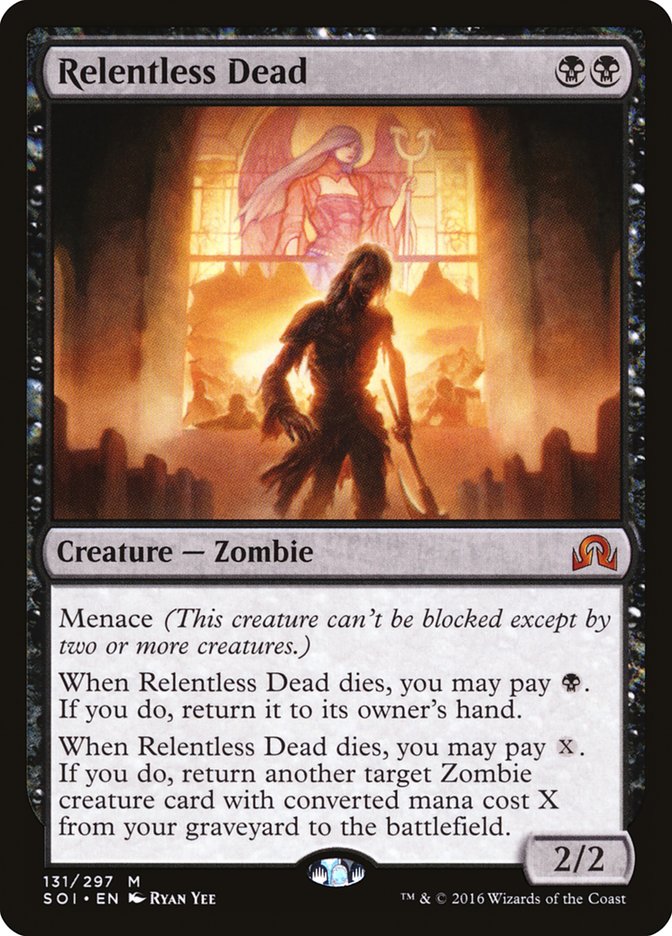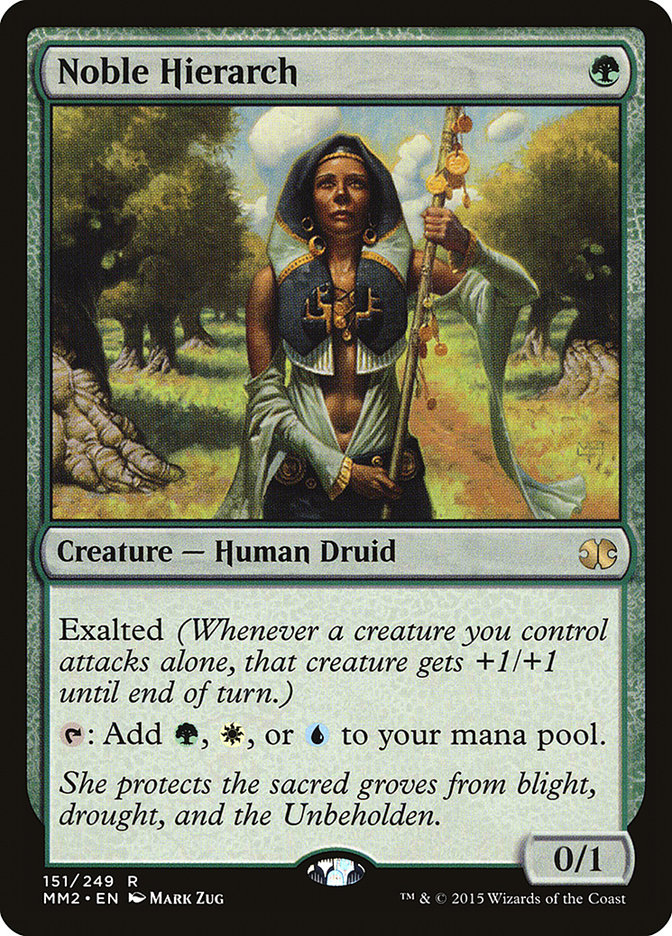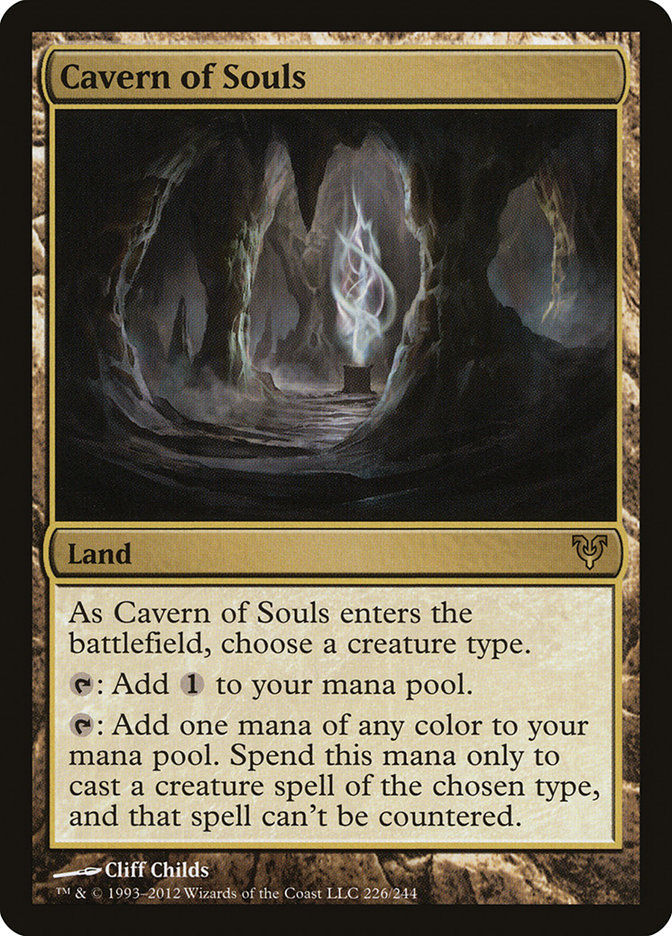After having followed The SCG Open in Somerset, the SCG Invitational, and both the Grand Prix last weekend, I’ve got Modern on the brain. I haven’t written about the format in a little while, so I wanted to spend a little time this week taking a look at the current state of Modern. Is the format healthy? Is it broken? What kinds of cards are worth investing in? What spells are past their prime? More importantly, are the methods we are currently using to evaluate pricing trends in Modern still correct? Let’s see if we can find out together.
In previous years, I would have structured this article around the Top 8 decklists from one or more of these events. Then I would have picked out a couple of interesting spec targets from the best brews and recommended them as potential investments.
I’m not going to do that today.
Why? In part, it’s because I believe that the way we have to think about Modern is changing. Consider the fact that the following decks finished Top 16 at either the SCG Modern Open or SCG Invitational:
· Abzan
· Affinity
· B/W Eldrazi
· Bant Eldrazi
· Blue Moon
· Burn
· Death’s Shadow Aggro
· Dredge
· Elves
· G/W Hexproof
· Infect
· Jeskai Control
· Jund
· Kiki Evolution
· Mardu Control
· U/W Flash
That’s seventeen different ways to attack the format, and I don’t even have information on the decks that finished 9th-16th at one of those two events. I could probably list another twenty viable Modern decks, too—Lantern Control, Merfolk, Burn, R/G Tron, Grixis Control, Ad Nauseam, Soul Sisters, Scapeshift, Hexproof, Zoo, Death and Taxes-style archetypes, Goryo’s Vengeance, Pyromancer Ascension, Living End, 8-Rack, 8-Whack, Ape Back, Marjihan Control, Thopter Sword…and I only had to make up two of those!
Not all of those decks are equally good or equally well-positioned, certainly. The most dedicated Modern players take note of subtle metagame shifts and adjust their deck choices accordingly. But for the majority of Magic players (read: most of the of people who actually buy cards), Modern has never been more open. Right now, the “What Modern deck should I build?” conversation should mostly hinge on your personal preferences.
What does this mean for card prices? Only good things for those of you still trying to get into Modern. More deck diversity means less demand for each individual card. The most expensive cards are and should remain the staples that are played across multiple decks, while everything else should be relatively immune to massive price increases.
What are the most-played cards in Modern right now? I wanted to avoid biasing this part of the article with my own personal feelings, so I took the top 60 most-played Modern cards according to MTG Goldfish’s metagame analysis. Then I separated them out by rarity. Here’s what I got:
Mythic rares:
There are only four mythic rares out of the top 60 cards, which is a tad surprising. Less surprising is which four cards made the cut. There has been a lot of talk recently about how Tarmogoyf’s best days may be behind it, but it’s currently the seventh-most-played card in Modern. Tarmogoyf isn’t going anywhere, and continuing to hold your personal playset is a totally reasonable decision.
The inclusion of Mox Opal here speaks to just how popular Affinity decks are. It’s been a good strategy since the early days of the format, and it’s still one of the two or three most popular decks in the online metagame. Unlike the other three cards here, though, Opal is only going to be good as long as its signature deck remains popular. Does that make it any less of a format staple? No, but it certainly makes it a riskier one to hold over the long haul—and one with very limited upside as long as Modern remains a very diverse format.
Rares:
As you may have guessed, this part of the list is dominated by Modern’s best and most popular lands. A little more surprising, especially if you haven’t been paying much attention to the format recently, is how many Eldrazi have made the cut.
Drowner of Hope should absolutely be worth more than the $0.24 it was selling for on StarCityGames.com last week, and even the more expensive cards like Eldrazi Displacer and Thought-Knot Seer are likely undervalued compared to where they’ll be a couple years from now. Scavenging Ooze is also ludicrously undervalued right now, especially considering the amount of Dredge running around the format at the moment. I’m in for a set of these at current retail.
Uncommons:
Monastery Swiftspear seems a likely candidate for reprinting at some point, but it might be a couple of years before WotC gets around to it, and I could easily see Modern’s fifteenth-most-played card hitting $10 in the interim.
Become Immense has room to grow as well, and if Ghost Quarter isn’t in this year’s Commander product I could easily see it doubling in price by this time next year.
Commons:
No real surprises here, though you probably can’t lose picking up any of these at under a buck. The buy-in is fairly low-risk, and all you need is for one of these cards to dodge a reprint for a couple of years in order to cash out.
How does this list compare to the most expensive cards in Modern right now? A quick search tells me that the format’s top ten currently looks like this:
1. Tarmogoyf
7. Damnation
10. Snapcaster Mage
Six of these cards are among Modern’s top 60 most-played cards, but four are not: Horizon Canopy, Crucible of Worlds, Damnation, and Grove of the Burnwillows. This tells me that the prices for these four cards has a lot more to do with a lack of supply than an overwhelming demand, and common sense bears this out: Horizon Canopy was only printed in Future Sight, Damnation only in Planar Chaos, Grove of the Burnwillows in Future Sight and a From the Vault product, and Crucible of Worlds in Fifth Dawn and Tenth Edition.
Considering how aggressive WotC is being with reprints these days, I wouldn’t want to be holding any of these cards right now unless I was actively using them. They have quite a ways to fall if they appear in, say, Commander 2016.
Is Modern Healthy?
It’s also worth taking a moment to examine the current health of the Modern format. After all, a vibrant Modern is likely to attract lots of new players and drive prices up. Not only would a sickly Modern hurt card values, but an unhealthy format is always at risk of major WotC meddling as they attempt to fix things. That would be bad news for anyone planning on investing in the current top decks.
The problem is that there is plenty of evidence to support either point of view right now. Team Healthy can hang their hat on the unparalleled format diversity and the fact that the full gamut of potential Magic strategies is present within those seventeen decks I listed above. Burn, Aggro, Midrange, Control, and Combo are all present in different forms. Ancestral Vision is a good card in Modern. So are Eidolon of the Great Revel and Through the Breach.
Also a plus: Modern continues to be shaped by new cards and strategies. Just off the top of my head, I can name Thought-Knot Seer, Eldrazi Displacer, Grim Flayer, Eldritch Evolution, Drowner of Thought, Insolent Neonate, Prized Amalgam, Collective Brutality, and Nahiri, the Harbinger as impactful Modern cards that were printed within the past year.
Team Unhealthy has a decent argument to make as well, though. First of all, go read this article that Todd Anderson wrote last week about the current state of the Modern format. In a nutshell, he argues that Modern’s diversity is a mirage. Despite the fact that so many different decks are good right now, most of them attack the format the exact same way: by attempting to enact a polarized, powerful, non-interactive plan.
At this point, Todd argues, Modern has become a format where every player is trying to do the most powerful thing they can without worrying about what his or her opponent has going on.
While Todd places some of the blame on the banning of Splinter Twin, this goes back to an argument that Paulo Vitor Damo de Rosa made back in the pre-ban days of 2015. Paulo’s concern, paradoxically, was that Modern’s suite of broken threats was too diverse. With only fifteen sideboard slots, he argued, it was impossible to effectively fight against all of the different broken decks in the format. Packing answers for Dredge might mean forgoing an answer to Affinity, or Burn, or Infect. This already puts anyone playing a reactive deck at a disadvantage and further incentivizes players to play powerful, non-interactive decks that have a shot at winning against everything.
Here’s where I come out on this: Todd and Paulo make really good points, but I’m not sure the problem is quite as bad as either of them make it out to be. I saw plenty of interactive games on the Grand Prix stream over the weekend, and both Brian DeMars and Ari Lax were tweeting over the weekend about how fun and interactive the format is right now.
Todd also acknowledges that Modern has been this sort of format from the start, and I suspect that many Magic players are attracted to Modern precisely because they want to lob nukes at their opponent. I think that Splinter Twin should be legal in Modern. I also think that Force of Will should be legal as well, but I’m weird like that. I love interactive Magic to the point where I legitimately prefer watching Draft coverage to Constructed, which is a minority opinion for sure.
In terms of Magic finance, I will get worried if I start to see more people become disenchanted with the format because of these kinds of frustrations. Based on the street-level voices I’ve heard—players I talk to on Twitter, at events, and at my local shop—opinions about Modern haven’t shifted all that much lately. The format is more or less as popular as it ever was. (Cue the vocal dissent in my article comments!)
If Todd’s position starts to gain traction, you might want to consider investing in some of the more interactive cards (including banned cards like Splinter Twin, Bloodbraid Elf, and Stoneforge Mystic) in preparation for a potential format shake-up. In fact, it’s not a bad idea to grab a set of each whenever they are next on sale and throw them in your long-term spec box.
It’s also worth keeping this polarization in mind when you consider which new and current Standard cards are most likely to succeed in Modern going forward. As I’m sure you’ve learned by now, the best cards in Standard don’t always become the best cards in Modern. Otherwise, Thragtusk and Squadron Hawk would have been all over the top tables at Grand Prix Indianapolis.
What sorts of new cards should you look for if you’re a Modern player, then? Anything that enables an incredibly powerful and broken plan to prevail has a shot at making it. Emrakul, the Promised End might me the most powerful Eldritch Moon card in Standard, but it probably plays too fair to ever do much in Modern. On the other hand, Splendid Reclamation isn’t seeing play anywhere right now, but I suspect it’s far more likely to end up as a major part of the Modern metagame at some point in the future.
To recap: I do think that Modern has some structural issues, but I don’t think its popularity is in jeopardy. If you’re looking to get into the format, pick the existing deck that most interests you and go for it—lots of strategies are viable at the moment, and your best bet is choosing something that excites you. I can’t see any one deck or strategy threatening to take over the format, which should prevent too many crazy price spikes. Beyond your own chosen deck, focus on building your collection of staples. Avoid expensive cards that don’t see a ton of play right now—they are likely to be reprinted and lose a great deal of value.
If I had to guess at what Modern prices will do over the next year, I predict that things will remain relatively stable and low key: neither a major format-wide price surge nor too many crazy drops appear on the horizon, especially now that there is no longer a Modern Pro Tour and we’re getting tons of reprints every year. Buying into Modern is relatively safe right now, but I doubt we’ll see anything approaching the massive growth enjoyed by the format during its first three years of life, and I caution anyone from going too deep on any of the current staples in hopes of a major short-term payday. As a player who jumps into the format occasionally so that I can do broken stuff, I like the current state of the format just fine.
This Week’s Trends
Standard prices are relatively quiet right now as we wait for Kaladesh previews to begin. Fevered Visions, Collective Brutality, Prized Amalgam, Gather the Pack, and Liliana, the Last Hope are all trending up. Emrakul, the Promised End; Tamiyo, Field Researcher; Gisela, the Broken Blade; Spell Queller; Rattlechains; and Elder Deep-Fiend are all trending down. Overall, the Standard market is in its usual post-PT bear market. Expect that to change in a week, when everyone will start getting excited about the new set.
It’s also worth noting that Emrakul, the Promised End; Kozilek’s Return; Thought-Knot Seer; Eldrazi Displacer; Relentless Dead; and Chandra, Flamecaller are all rising in price on MTGO. Those of you who feel that paper prices are basically a lagging index for online card prices might want to consider grabbing some of these before Standard prices start to rise again in mid-September.
In Modern, Tarmogoyf and Ancestral Visions appear to have stopped their declines and are starting to slowly rise again. Cavern of Souls, Noble Hierarch, and Death’s Shadow continue to rise in price as the metagame continues to be redefined. Engineered Explosives has seen incredible gains over the past week, probably because it’s very good against Death’s Shadow Aggro and decent against a slew of other good decks. Versatile sideboard cards like this are lynchpins of the Modern format—see our discussion above—and I expect Engineered Explosives to hold its new price going forward. The spike was based on real demand, not an artificial buyout.
Conspiracy: Take The Crown card prices are falling as tons of singles hit the market. I wouldn’t buy in yet, though. Demand is still high, and the supply is only going up from here. I’d suggest holding off for another couple of weeks and targeting these cards at or around the Kaladesh prerelease. Conspiracy will be old news by then, and you should be able to get some really favorable buys and trades as everyone turns their gaze toward Standard.
Deals of the Week
Dollar days are here at StarCityGames.com! There are hundreds of cards on sale, including a ton of the $1.50 – $2 mythic rares that I like to throw in my long-term spec box. See the Unwritten; Anafenza, the Foremost; and Angel of Serenity are obvious buys at a buck apiece. If you’re a Modern player who still lacks a set of Siege Rhinos, you should grab those (Clash Pack printing) at a dollar each as well. Ditto on the Chronicles Tron pieces, which always seem to trade fairly well for me. A ton of Standard foils have had their prices dropped from $2 to $1 as well, so be sure to check those out if you’re a rogue deckbuilder or a Commander player with a love of shiny objects.
Comments from Last Week
How will the print run affect the supply of the higher-value cards in Conspiracy: Take the Crown? Based on what I’ve heard from my local game store, it sounds like the run will be massive this time around.
– Brett Warriner
Brett, you’re right. Based on what I’ve heard, the print run for this set is likely to be quite large. I had expected the first Conspiracy set to have a lot of sneaky-valuable cards, but many of them dropped in price over the past year because booster packs are still available in many game stores. If Take the Crown follows the same path, I expect many of the high-value cards to drop in price—something I talked about in my set review last week.
Of course, it’s also possible that something happened with the first Conspiracy set that we didn’t know about. Perhaps it was overprinted relative to demand, which could be why it has been available for so long. Now that WotC has a better sense of how a set like this might sell, they could print fewer copies. We likely won’t know the answer for at least six months, and probably longer.
I have a Gideon Prerelease foil that’s a misprint. The date stamp is completely upside down and on the left side of the card instead of the right. Any thoughts on what something like this would be worth?
– Kevin Johnstone
Kevin, I’m not sure which Gideon you’re referring to, but I’ll assume it’s the better one from Battle for Zendikar. Right now, a non-misprinted Prerelease foil of Gideon, Ally of Zendikar retails for $34.99—not bad.
If this were an older card or something that saw extensive play in an Eternal format, the misprint modifier might be quite large. The collectors and players who like cards like this tend to prefer things they can show off in their Vintage deck as well as artifacts from the early days of Magic. A misprinted Brainstorm, say, can be worth quite a bit.
As for your card, it is likely worth somewhere between one-and-a-half and four times the current retail price. The trick is finding someone interested in paying that much, which won’t be easy. You’ll probably need to find either a very big fan of Gideon, someone who loves collecting planeswalkers, or someone building a high-end Cube. I’d ask $100 in trade and probably settle for closer to $60 or $70 if pressed.





